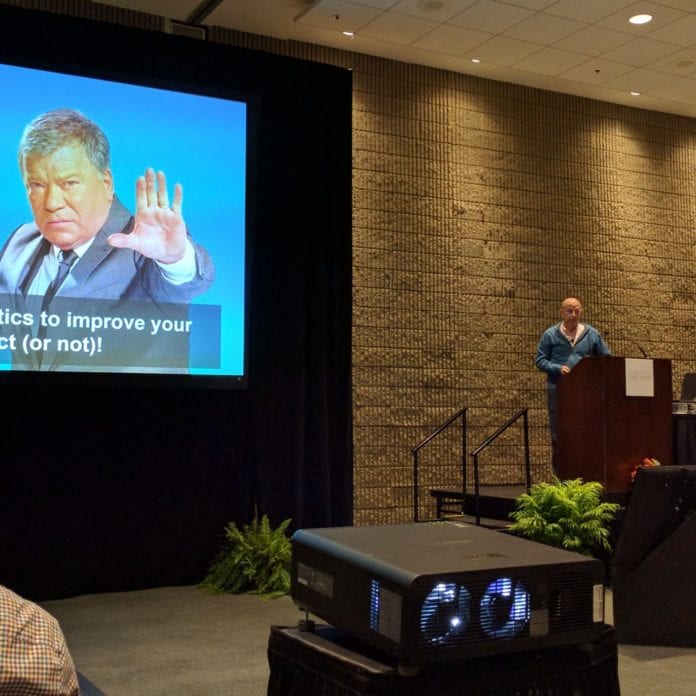Data analytics, the brain of IoT
ATLANTA – Mike Gualtieri, principal analyst at Forrester, hosted a panel titled Five Essential Analytics for IoT Applications, at Teradata’s PARTNERS 2016 conference in Atlanta. He listed five essential types of data analytics that must be performed on “internet of things” applications on both a macro and micro scale.

Before giving his list, Gualtieri explained that IoT apps existed before the existence of the term internet of things, and have simply been reclassified as IoT by their vendors. He provided some background on what defines an IoT app: something that has sensors and may or may not need actuators or controllers, and as something that is not truly smart without the brain that comes from the analytics performed on data.
According to Gualtieri, IoT apps must:
- Learn individual device and systems of device’s characteristics and behaviors;
- Detect context in real time;
- Decide how to act in real time; and
- Adapt logic over time to improve application value.
The principal analyst said that the problem with analyzing data from an IoT system is that most analytics are done much later than when the data is created, and that there is a need for real-time analysis as well as batch analytics.

Enterprises must act on a range of perishable insights to get value from big data, according to Gualtieri. That is because that while data doesn’t get lost with time, insights do. And some need to be acted on immediately.
“Most companies are wasting a lot of money on analytics that don’t get looked at or are looked at and used improperly or not at all,” Gualtieri said.
Essential analytics for IoT

Guarltieri gave his five types of analytics that are essential for IoT insight:
- Streaming analytics: detect and act on real-time perishable insights. Filter, aggregate, enrich and analyze high throughput of data from disparate live data sources to identify patterns, detect urgent situations and automate immediate actions in real-time (In-memory (RAM)). Adoption grew from 24% in 2014 to 42% in 2015.
- Example: Warns other drivers that the road is slippery to avoid a crash right now. Sensors detects wheel slippage and sends a warning to car a mile behind that there is slippage up ahead. IoT can learn about that part of the road so next time it warns the driver.
- Machine learning: Builds learned logic (predictive) models from historical data. Mostly done in batch mode with few exceptions. Expressed in different ways: AI, predictive analytics, data-mining, etc. Analyzes data from the IoT system and produces models that predict outcomes or understand context with significant accuracy and improve as more data is available.
- Types of models: classifiers (predict characteristic), recommenders (recommend next best action), cluster (identify patterns).
- Spatial analytics: sensors detect what is happening at certain locations. Tools, techniques and technology to understand the fixed and changing spatial relationship among physical objects. Location is critical. Historical sources: GPS, IP address, RFID, cellular.
- Time series analytics: All data has a timestamp. Batch processing of time series, looking for trend. Tools, techniques and technologies that analyze time-ordered data to find statistical patterns and/or forecast future values in time.
- Prescriptive analytics: improve the decision to act (or not). Success depends on the collective efficacy of decisions about customers, operations and strategy and provides the ability to rapidly model, improve and change decision logic.
To round things out, the speaker said analytics for IoT are composed of practices, processes and technologies that use data, analytics, math, experiments and human insights to improve efficacy of decisions made by humans and/or by decision logic embedded in apps.

